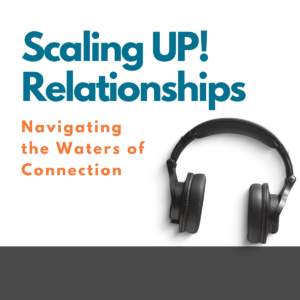354 Steam Boilers: Essential Checks, Part 2

 “Don’t shortcut boiler safety. Do it once, do it right, and don’t put your life or someone else's life at risk.” - Barry Higgins
“Don’t shortcut boiler safety. Do it once, do it right, and don’t put your life or someone else's life at risk.” - Barry Higgins
Happy days are here again! Dive deeper into the realm of steam boilers with Part 2 of our exclusive interview with the brilliant Barry Higgins from AquaChem. If you enjoyed last Friday's episode, get ready for an even more profound exploration into the intricacies of boiler management.
In this episode, Barry takes us on a journey through advanced topics crucial for every water treater and industry enthusiast. Discover the significance of pH management, from its intricate relation to alkalinity to the cautionary notes on caustic demand above pH 11. Barry emphasizes the importance of precise pH meter calibration, advocating for separate probes in high pH ranges and the use of single-use cells for calibration.
Explore the nuances of the blowdown system as Barry stresses the effectiveness of short, pulsating blowdowns for optimal sludge removal. Uncover the distinctions between bottom and top blowdowns and the potential pitfalls of leaving the blowdown open for extended periods. Safety measures take center stage as Barry shares a personal account, highlighting the critical importance of regular checks on low and high-level probes, weekly boiler checks, and alarm tests.
Water level monitoring becomes a fascinating topic, discussing variations due to steam density, the significance of steady levels, and the importance of checking sight glasses for signs of corrosion. Barry wraps it up with insights into boiler water sampling, offering guidance on ideal sampling locations and considerations when a sample cooler is unavailable.
Join host Trace Blackmore as he continues his conversation with Barry Higgins, unraveling advanced boiler checks and sharing invaluable wisdom. Get ready for a knowledge-packed episode that elevates your expertise in industrial water treatment. Happy days, indeed!
Timestamps
01:00 - Trace Blackmore reminds you to share your water resources with others
03:40 - Upcoming Events for Water Treatment Professionals
08:30 - Interview with Barry Higgins, Boilers Part 2
34:30 - Lightning round questions
40:00 - Closing thoughts with Trace
48:15 - Drop by Drop With James McDonald
Quotes
“Do it once, do it right, and don’t put your life or someone else's life at risk.
It’s not worth your life. Don’t shortcut boiler safety. Get the steam properly in one hour, not two minutes.” - Barry Higgins
“You have to check all your levels and check all your probes and make sure all these alarms are working.” - Barry Higgins
“Jump in, you’ll love working with water. If you like to solve problems this is a job for life. You will never have two days that are exactly the same.” - Barry Higgins
“I'm a water treater, I'm not a Magician.” - Barry Higgins
“Advice for water treaters on day one: Be bold. Make hard decisions that come your way, don't be scared of them. It’s gonna be a roller coaster. It's gonna be up. It's gonna be down, but just go with the flow and learn. If you get a knock get back up again and and learn learn from why you failed and just keep going” - Barry Higgins
Connect with Barry Higgins
Phone: +353 87 987 8606
Email: bhiggins@aquachem.ie
Website: www.aquachem.ie
LinkedIn: in/barry-higgins-bagrsc-59030225
Read or Download Barry Higgins’ Press Release HERE
Links Mentioned
Ep 281 The One About The Power of Kindness with Kathleen Edelman
Ep 117 The One With Temperament Expert, Kathleen Edelman
Ep 179 Another One that Teaches Us to Communicate Better with Others
AWT (Association of Water Technologies)
Books Mentioned
I Said This, You Heard That by Kathleen Edelman
I Said This, You Heard That, Workbook by Kathleen Edelman
I Said This, You Heard That, Workbook, 2nd Edition by Kathleen Edelman
Adults Guide to Kids Wiring by Kathleen Edelman
Talking To Strangers by Michael Harding
Drop By Drop with James
In today’s episode, we are going to talk about one of water’s absolutely amazing properties. We are going to talk about hydrogen bonding, one of my favorite types of bonding in the atomic world. Yeah, I’m weird that way.
Water is H2O or two hydrogen atoms and one oxygen atom. The two hydrogen atoms are not stuck to each other but are stuck to the oxygen atom instead. It’s HOW they are stuck to the oxygen atom that makes all the difference in the universe! They are NOT stuck directly across from each other on the oxygen atom at 180 degrees like the buns on Princess Leia’s hair. No buddy. That would have been disastrous for life as we know it! We would have had no hope.
Instead, they are stuck at an angle; at approximately a 104.5 degree angle. Think Mickey Mouse with his two ears representing the two hydrogen atoms and his head the oxygen atom. THAT is water. This kink of an angle leads to a very important superpower. Because the hydrogen atoms are small and only have 1 measly electron, they’re easy to push around and take their electrons. The much bigger oxygen atom only needs 2 more electrons to fill its outer shell and be in a state of nirvana, and it gets these from the two hydrogen atoms. Because the water molecule looks like Mickey Mouse with the hydrogen atoms more on one side of the molecule than the other, you end up with a partial positive charge on the more hydrogen side and a partial negative charge on the more oxygen side.
We’ve all heard that opposites attract, and that’s true in the world of chemistry as well. The partially positive side of one water molecule is attracted to the partially negative side of another water molecule, making water “sticky.” This, my friends, is called hydrogen bonding. It doesn’t just end with water molecules sticking to each other, though. Water molecules will also be attracted to other positively and negatively charged ions, too. For example, this explains why table salt or NaCl dissolves so easily in water. The positive sodium ions are attracted to the partially negative oxygen side of the water molecule while the negative chloride ions are attracted to the partially positive hydrogen side.
Hydrogen bonding leads to all kinds of unique properties of water. Water is a liquid at room temperature. That may sound like a “duh” comment, but when one considers that other molecules of similar or heavier weights are gasses at room temperature, such as methane, propane, and butane, it suddenly seems a little more amazing.
Water has a high heat capacity, meaning it takes more heat to raise the temperature of water and especially to make it change phases from solid to liquid to gas. We use this property every day in industrial water applications with boilers, cooling towers, etc., and it’s all thanks to hydrogen bonding.
There are more examples, but it should suffice to say that hydrogen bonding is one of water’s primary super powers that influences our industrial water lives in so many ways every second of every minute of every day.
2024 Events for Water Professionals
Check out our Scaling UP! H2O Events Calendar where we’ve listed every event Water Treaters should be aware of by clicking HERE or using the dropdown menu.
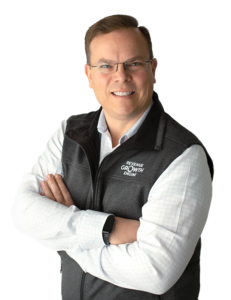 Darrell Amy
Darrell Amy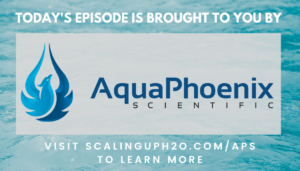

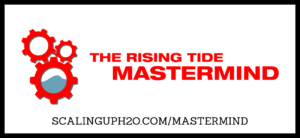
 “It’s my nature, I want to help people and solve their problems.” - Barry Higgins
“It’s my nature, I want to help people and solve their problems.” - Barry Higgins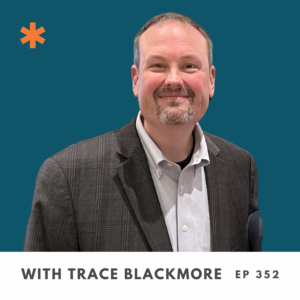 Like you, we all want our water business to be profitable.
Like you, we all want our water business to be profitable.  “Pre-treatment is the key to everything.” - Dr. Kelle Zeiher
“Pre-treatment is the key to everything.” - Dr. Kelle Zeiher


 “Credentials have been one of the most important ways to help promote public health and safety and prevent disease, dismemberment, or death.” - Christoph Lohr
“Credentials have been one of the most important ways to help promote public health and safety and prevent disease, dismemberment, or death.” - Christoph Lohr "With water, everybody loses or everybody wins." - Emily Lewis
"With water, everybody loses or everybody wins." - Emily Lewis
